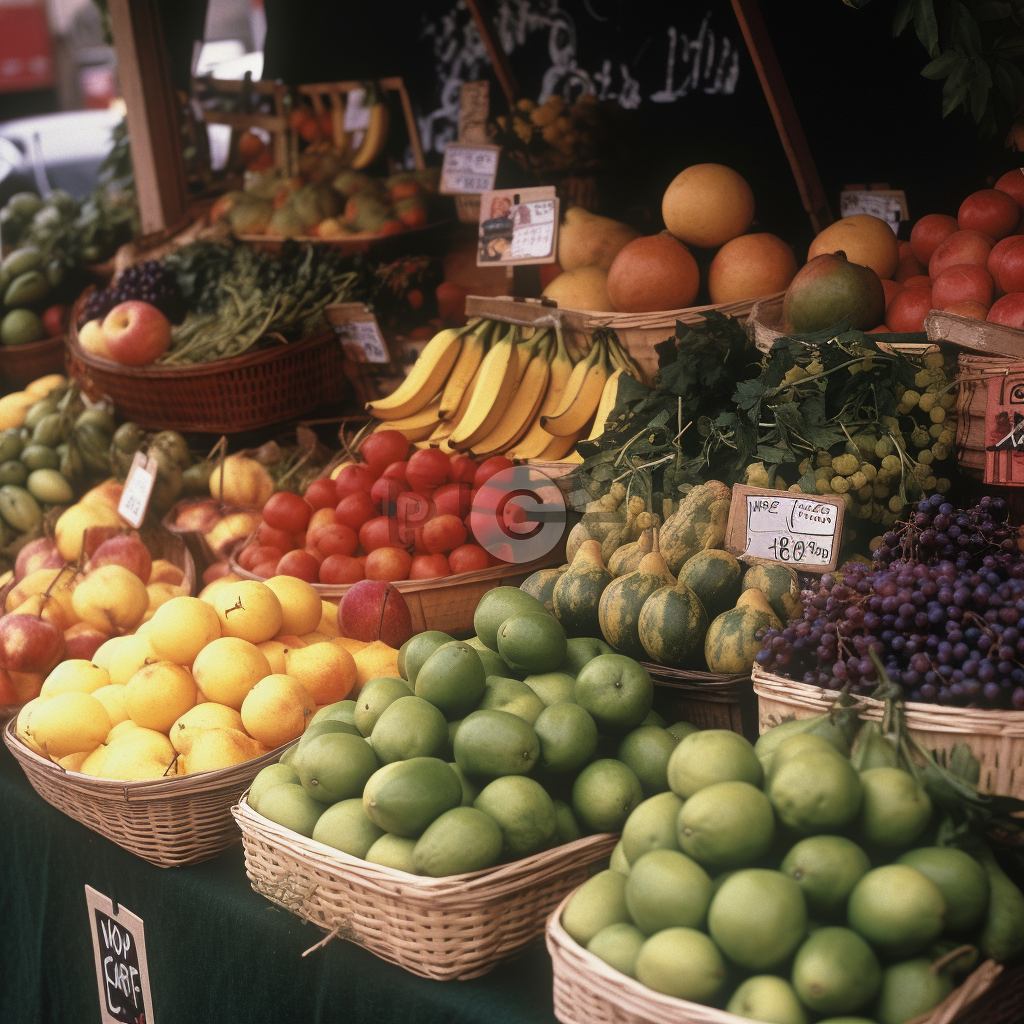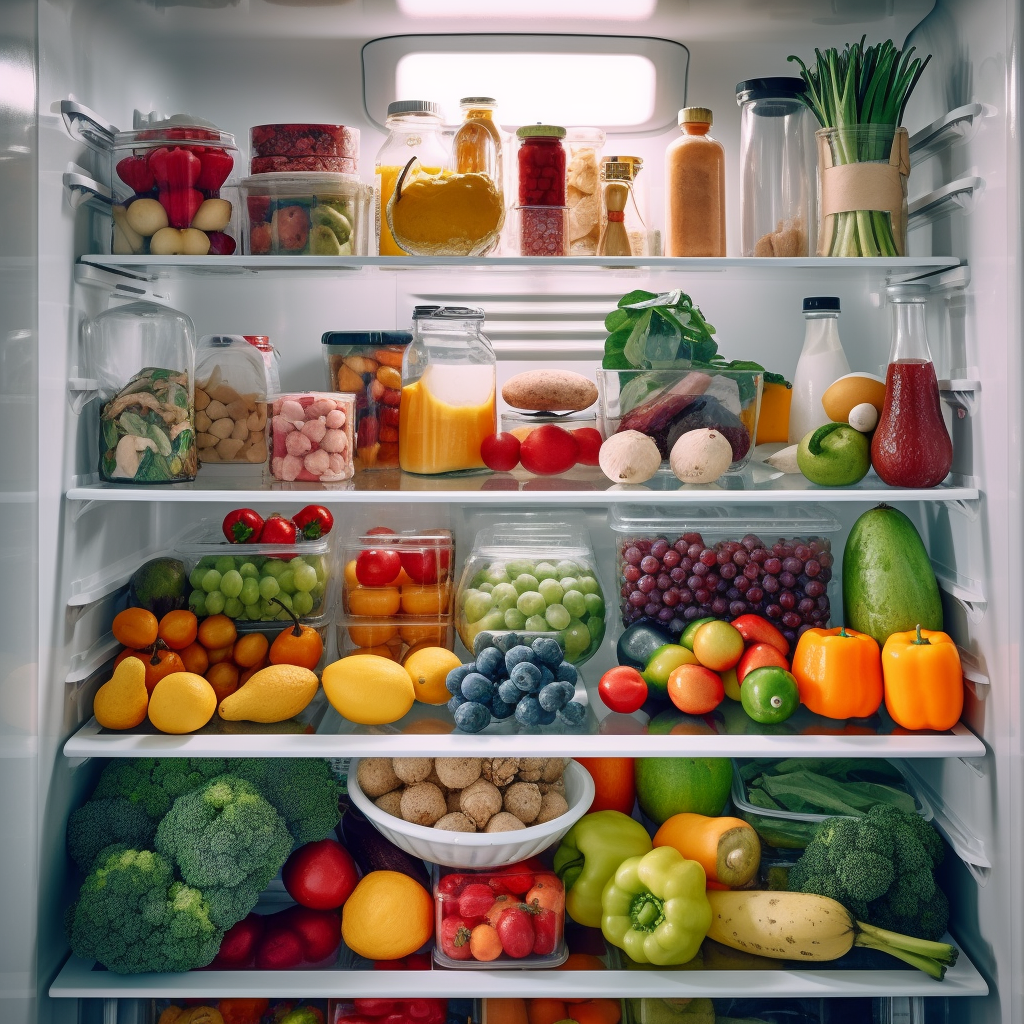Healthy Eating Without Emptying Your Pockets

It’s time to break a longstanding myth: eating healthy != breaking your bank. According to a compelling study by Harvard’s Nutrition Source, the average daily cost disparity between healthier and unhealthier food choices is a mere $1.48. Believe it or not, a budget-friendly, nutritious meal plan is perfectly achievable with the right combination of tactical shopping and efficient meal prep!
Enter: Seasonal Produce

Want to know one of the most effective tricks to keep your shopping cart budget and waistline in check? Start guiding it towards seasonal fruits and vegetables. These picks are not only nutritious and delicious but they also come with a smaller carbon footprint due to their minimal travel and storage time. What’s more, flooding your pantry or freezer with seasonal produce—when bought in bulk—can be a true wallet saver, as suggested by Mayo Clinic. But remember, it’s about more than just buying. Learning how to correctly store your produce to prevent food wastage is just as essential. Moreover, online retailers can also provide a trove of affordable, high-quality options. As endorsed by Healthline, many such platforms offer delightful deals on seasonal goods. Remember, being a canny consumer today will pay dividends in your future well-being!
Your Secret Weapon: Seasonality

The art of understanding seasonality can be a potent weapon in your journey towards healthier and budgeted eating. Seasonality is the annual cycle that denotes the peak supply of specific fruits and vegetables. And as the supply increases, the prices usually drop—becoming lighter on your pocket! Apart from cost, seasonal produce also offers superior taste and nutritional potency—just think of the astonishing flavor of a ripe summer peach as opposed to bland off-season ones. But how can you identify which fruits and veggies are in their prime? Most fresh produce—while some, like bananas and potatoes, can be found year-round—flaunt distinct seasonal peaks, and a quick online search or a handy seasonal guide can help you stay updated. What’s more, mastering proper storage of these picks can elevate their shelf-life, taste, and nutritional integrity. Take certain fruits like apples and berries — they freeze well and provide a budget-boost beyond their season. So scroll through online seasonal food guides, get inspired, and enjoy the seamless transition to a variety-filled diet that can equally benefit your body and budget!
Storage 101: Longevity is Key
Having armed yourself with the knowledge of seasonality, the next step becomes ensuring that your healthy bounty remains usable for as long as possible. The key here lies in efficient storage, categorization, and preservation. All types of fruits and veggies have unique storage preferences. For examples, potatoes and garlic enjoy cool, dark, dry places while apples relish the refrigerator chill and bananas prefer being left out at room temperature. Getting these storage conditions right can go a long way in giving you flexibility and extending the usefulness of your seasonal harvest.
Fresh Produce: The Art of Smart Storage

Nutrient-packed, colorful fruits and vegetables can form the cornerstone of a healthy diet without burning a hole in your pocket. However, to get the most bang for your buck when buying these healthy staples in bulk, you must master the art of storage. Let’s dive into some savvy storage techniques that will help maintain the freshness of your produce for an extended period:
- Store fruits and vegetables separately: Some fruits emit ethylene gas, which can speed up the ripening process of other produce. Hence, it’s smart to keep fruits and veggies in separate compartments.
- Use your refrigerator’s crisper drawer judiciously: Make use of the humidity control in the refrigerator’s crisper drawer. Leafy greens prefer higher humidity, while fruits and veggies prone to rotting do better in low humidity.
- Avoid overcrowding your fridge: An overly packed refrigerator can obstruct air circulation, leading to poor cooling and quicker food spoilage.
- Be gentle with delicate items: Fruits like berries and figs are quite delicate and can easily be squashed. Keep these on top of other items to prolong their life span. Here’s a quick guide to storing some common produce:
- Cool and dark: Ideal for potatoes, onions, and garlic.
- Refrigerator: Store apples, berries, lettuce, and bell peppers here.
- Room temperature: Bananas, tomatoes, peaches prefer this environment.
Waste Not: Preserve Your Surplus Produce
Sometimes even the best-laid plans cannot prevent a surplus of produce. But, fret not; you can freeze, can, or dry your excess harvest for future use. Freezing fruits and veggies quickly at their prime ensures they retain most of their nutritional value. They can be a versatile addition to smoothies, sauces, soups, or stir-fries. Also, remember to label each container with its content and the date of freezing. If you can spare the time, consider canning or drying your produce to extend its shelf life further. Canning involves packing fruits and vegetables into jars and heating them to kill any spoilage-causing organisms. Drying, on the other hand, slows down enzyme and bacteria activity by removing water from the produce.
Choosing Seasonality and Variety for a Healthier Wallet and Body
So you see, eating healthy on a budget isn’t a far-fetched dream. Making mindful choices like prioritizing seasonal produce, practicing savvy shopping, adopting smart storage techniques, and minimizing waste can substantially streamline your spending. Each season brings its own bounty of fresh fruits and vegetables to the table. Exploring this variety can make eating healthy an exciting culinary adventure! And what’s more satisfying than saving money, supporting local growers, and contributing to environmental sustainability, all while taking care of your health? So go on, dip your toes into the world of seasonal eating, and let your wallet and waistline thank you! Remember to seek advice from healthcare providers for dietary recommendations tailored to your specific needs. Happy, healthy eating! Stay tuned for the next piece in this series where we’ll delve deeper into creating a healthy diet on a budget featuring more innovative strategies and resources.
Making produce last is an art to be mastered. Storage plays a defining role in the equation. For instance, potatoes, onions, and garlic prefer a cool, dark closet away from direct sunlight. On the other hand, storing most fruits at room temperature until ripe, then refrigerating them, extends their edible life. Not to forget the power of freezing. Vegetables such as bell peppers, broccoli, and zucchini retain their nutritional punch even after freezing. Slice ’em, freeze ’em, and pull them out for a stir-fry, casserole, or smoothie when ready – easy and healthful! And remember, visibility matters. Clear containers or plastic bags keep your fruits and veggies in plain sight – this way no red pepper gets forgotten!
Preservation Methods: More than a Lifeline When talking preserving, we should touch on two significant methods: freezing and canning. Proper freezing extends the life of your produce without compromising the nutrients. Start by freezing berries spread out on a tray, then repack into smaller bags. For green veggies, a quick blanch before freezing guarantees lasting color and nutritional value. Ever considered canning? High-acid food like tomatoes and fruits can safely be canned via a water bath, whereas low-acid food like green beans need pressure-canning. It could end up being a fun and rewarding weekend project.
Thoughtfully Using Your Store and Preserve Stowing and preserving are only the first steps. The fun begins when you incorporate that goodness into yummy, healthful recipes. Spin frozen butternut squash into a rich soup, or add canned peaches to overnight oats for a natural sweet stern. Celebrate seasonal produce and let your stored and preserved items guide your cooking creations. After all, you’re a savvy shopper skilled in extending your produce’s life, free to savor nutritious, budget-wise meals. References:
- Ethylene: The Ripening Hormone (University of California, Davis)
- Storing Fresh Fruits and Vegetables (University of Maine)
- How to Store Fruit and Vegetables (Sustainability Victoria)
- Freezing Vegetables (National Center for Home Food Preservation)
- Preserving Food: Canning Basics (University of Georgia Extension)
- Home Canning: Recommended Process Times (Health Canada)
